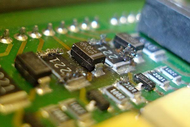Three Things to Understand in IPC Standards
Posted by Staff - Soldertraining on 17th Dec 2021
Industries globally follow specific identified standards to ensure the reliability and quality of electronic components or devices. IPC "Association Connecting Electronics Industries" is a global trade association with specified critical criteria to manufacture PCBs and other electronic components. Besides manufacturing, IPC also identifies standards for fabrication and assembly, training, protecting electronic equipment, public policy advocacy, and market research.
Internationally, IPC has more than 4500 companies as its members. These members span across different domains of the electronics industry. It may include circuit board manufacturers, designers, suppliers, assemblers, and equipment manufacturers. These stakeholders follow IPC standards tobring consistency, accuracy, and integrity in their processes.
History Of IPC Standards
In the year 1957, six PCB manufacturers had come together to establish the Institute of Printed Circuits. These standards were set to remove supply chain obstacles, create industry standards, and support industry advancement. In the year 1977, the official name of IPC was changed to the Institute for Interconnecting and Packaging Electronic Circuits. However, in the year 1999, it again adopted the name IPC, joined by the tagline: Association Connecting Electronics Industries.
Classes Of Electronics Based on IPC Standards
As per the IPC standards, it categorizes electronic products into three different classes.
Class 1: General Electronic Products
It shows a greater degree of 'leniency' to permit any allowances for potential defects or service interruptions. It includes products that are cheap, low-consequence, and have a shorter lifespan. This class generally includes commercial electronics products.
Class 2: Dedicated Service Electronic Products
These include non-critical electronic assemblies, which desires long-term reliability, but it may not be essential. It permits certain anomalies, but it needs to be highly reliable, durable, and leverage continuous operation. But, even if it fails to fulfill specific criteria, it will not threaten personal health or safety.
Class 3: High Performance/Harsh Environment Electronic Products
It holds the highest rank among the three IPC classes. It looks after various vital processes such as laminate selection, plating thickness, material qualifications, manufacturing processes, and inspection. It requires quality and reliable workmanship. The products under this class are time and cost-intensive, and they must operate on demand without any interruptions.
Importance Of IPC Standards
Maintain End product Quality and Reliability: The standards help streamline the design, manufacturing, and assembly of electronic products. It helps to avoid any anomalies and maintain consistency in the production pipeline. Hence, the end products can perform better and last longer.
Cost Reduction: Leveraging IPC standards in different stages of the manufacturing process help to release high-performing and reliable products. These products do not require secondary quality checks, hence reducing testing costs. It standardized the terminologies for communication. Hence, the chances of delays or reworks are also reduced.
Maintain Reputation: The IPC is an internationally recognized standard. If your industry practices are aligned with IPC standards, it will help to build your market repute. It will help you enhance product quality and improve your reputation to improve customer retention and satisfaction.
To Conclude:
These are a few underlying principles that guide the IPC standards. It will help you build safe, reliable, and high-performing PCB boards, contributing to overall success. Becoming IPC certified will help you maintain competitive relevancy and establish your organization as a leader in the niche market.

